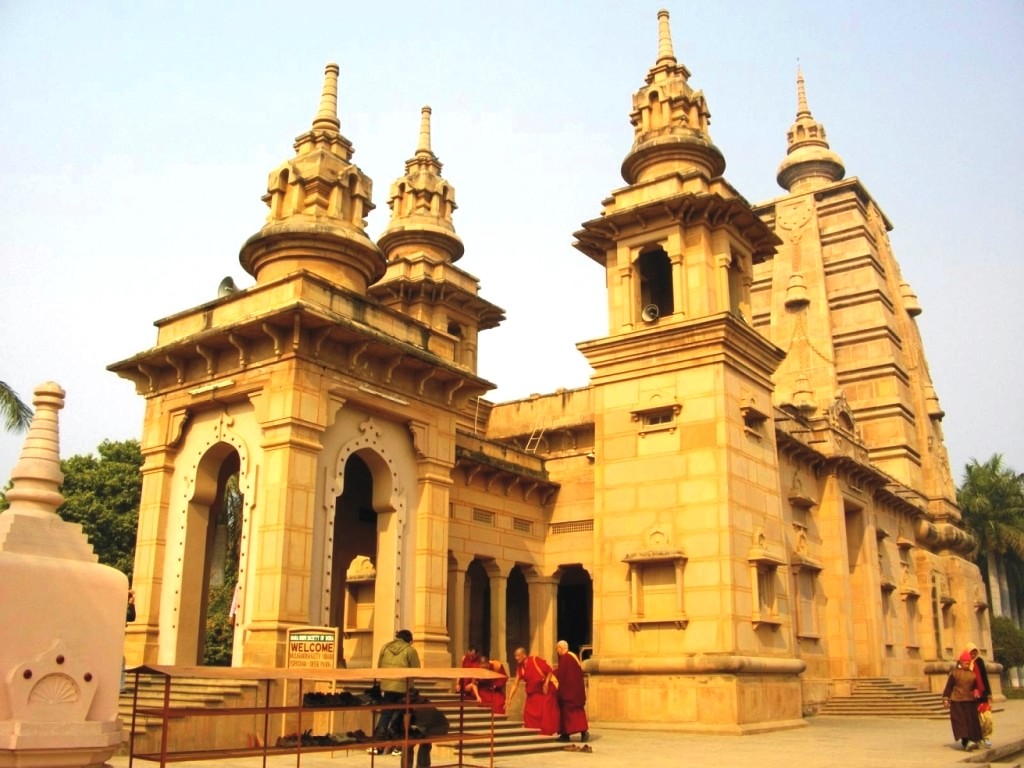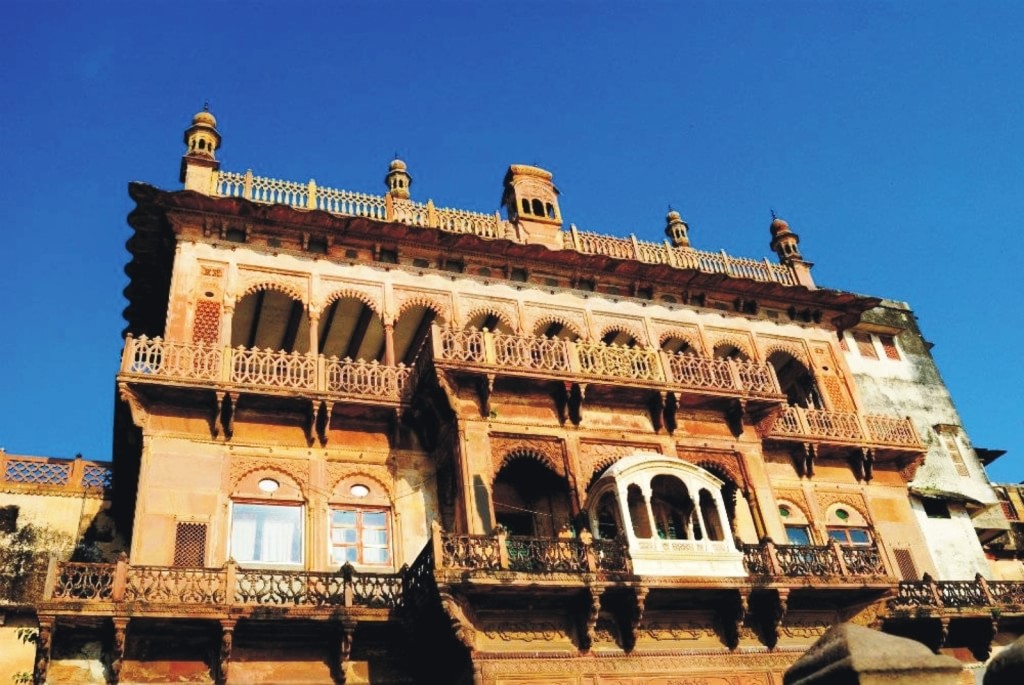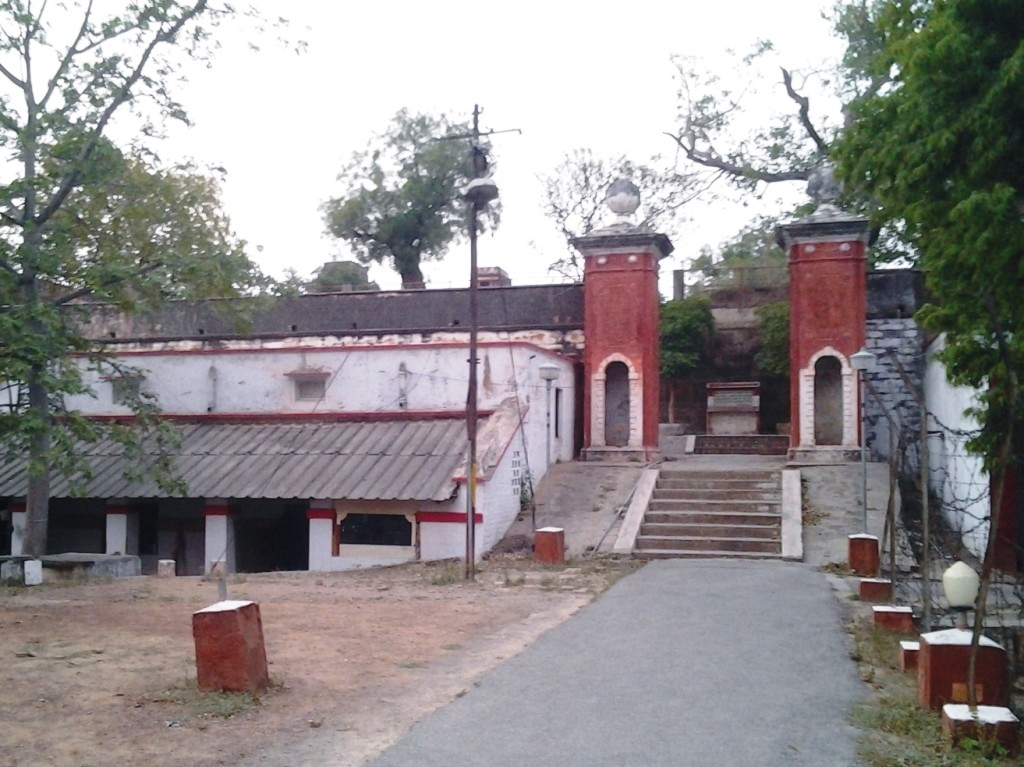Around Varanasi
 Mulgandha Kuti Vihar Buddhist temple at Sarnath
Mulgandha Kuti Vihar Buddhist temple at Sarnath
SARNATH
The Buddhist pilgrimage, Sarnath lies 10 km from Varanasi, near the confluence of the Ganges and the Gomati rivers in Uttar Pradesh. The deer park in Sarnath is where Gautum Buddha gave his first sermons on Dharma. The main Buddisht temple is the Mulgandha Kuti Vihar temple. The Archaeological Museum, the Dhamek Stupa, the Chaukhandi Stupa and ruins of monasteries are also interesting highlights of Sarnath. Other modern structures like the Japanese & Korean temples have been recently added to the Sarnath topography in the last few decades. Singhpur, a village approximately one km away, was the birthplace of Shreyansanath, the eleventh Tirthankara of Jainism, and a temple dedicated to him, is an important pilgrimage site even today.
 Ramnagar Fort opposite Tulsi Ghat
Ramnagar Fort opposite Tulsi Ghat
RAMNAGAR
The Ramnagar Fort is located near the Ganges River on its eastern bank, opposite to Tulsi Ghat. It was built by Raja Balwant Singh in 1750 in cream coloured chunar sandstone. Its carved balconies, open courtyards, and pavilions is typical of Mughal style architecture. It is 14 kilometers from Varanasi and 2 kilometers from the Benares Hindu University by pontoon. During the monsoon season, the fort is accessible across the river by ferry service only. A boat ride to the fort from Dashashwamedh Ghat in Varanasi takes about an hour.
The city of Ramnagar is most famous for its depiction of Ramlila in the most authentic form. The fort palace is vibrant and colourful during the one month long Ram Lila festival where different episodes of Ramayana are enacted. On this occasion, a colourful procession of Ramayana epic is presented as part of the Dussehra celebrations. These celebrations are concluded on the last day of Dussehra with the burning of the effigy of Ravana, the demon king, which signifies victory of good over evil.
 Chunar Fort, Mirzapur
Chunar Fort, Mirzapur
CHUNAR FORT
Chunar Fort lies 37 km from Varanasi and is flanked by the Ganga on two sides. Along with Chunar town, situated below the fort, the two are historic places with common history and legends. The southeastern part of the fort is on the rocky bank of the Ganges River. It is said that Maharaja Vikramaditya, the king of Ujjain established the fort of Chunar. The fort came into prominence after the visit of Babar followed by Shershah Suri, Humayun, Akbar, Aurangzeb and finally the Britishers. The first Governor General of India, Warren Hastings also took shelter here when a rebellion broke out in 1781. His house can still be seen in the fort. The fort is often used as a backdrop for TV shows and Bollywood movies. Secret tunnels and hidden pathways are the highlights of its architecture. Military presence can still be seen here as this used to be a part of a training centre of the army.
Chunar is known for its decorative Red Clay pottery. This pottery contains delicate designs made with silver paint. A more elaborate variety is by producing a glossy finish using a special powdery preparation called 'kabiz.' This powder is made using soil taken from rice fields.


















